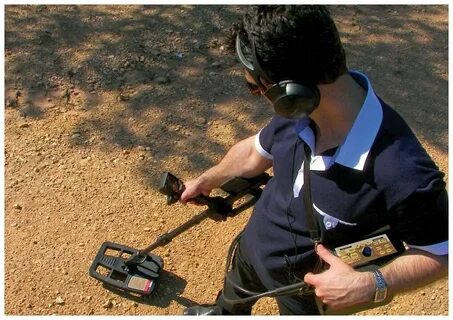Your cart is currently empty!
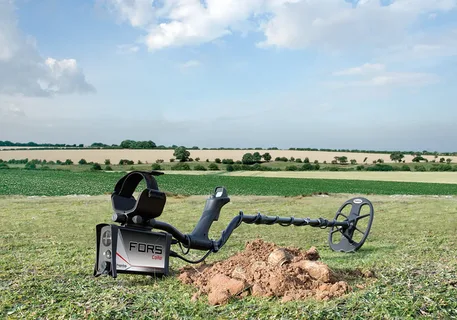
Detect metal detectors are an essential tool for security and safety in a variety of settings. These devices are designed to identify the presence of metal objects, making them crucial for screening individuals and their belongings in locations such as airports, schools, and public events. In this article, we will explore how detect metal detectors work and why they are considered indispensable for maintaining a secure environment.
Detect Metal Detectors operate by emitting a magnetic field and detecting any disruption caused by metal objects. When a metal object enters the magnetic field, it disturbs the field, triggering the detector to alert the user. These devices are essential for security purposes to identify concealed weapons and contraband. They are commonly used in airports, public buildings, and high-security areas to ensure the safety of individuals and prevent potential threats. By effectively detecting metal objects, these devices contribute to maintaining a secure environment and deterring criminal activity.
The Importance of Quality Metal Detectors for Security Screening
See also: metal detectors that detect gold
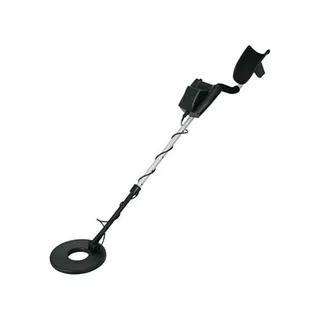
Quality metal detectors play a crucial role in security screening for various settings, including airports, schools, government buildings, and public events. These detectors are designed to accurately and efficiently detect metallic objects on individuals entering a designated area. By doing so, they help to prevent weapons, explosives, or other potentially dangerous items from being brought into secure environments.
High-quality metal detectors are essential for maintaining security and safety measures. They are equipped with advanced technology and features that enable them to distinguish between harmless metal objects, such as jewelry or coins, and potentially threatening items. This helps to reduce the risk of false alarms and minimize disruptions to the screening process.
In addition, quality metal detectors are designed to be reliable, durable, and easy to use, making them essential tools for security personnel. They provide peace of mind and help to enhance the overall effectiveness of security procedures, ultimately contributing to the protection of individuals and the public in various settings.
How to Properly Operate and Maintain Metal Detectors
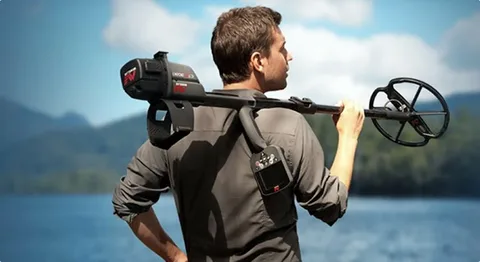
Metal detectors are essential tools for various industries, including security, construction, and mining. Properly operating and maintaining metal detectors is crucial for their effectiveness and longevity.
1. Familiarize yourself with the user manual: Before operating a metal detector, carefully read and understand the user manual provided by the manufacturer. This will give you a comprehensive understanding of the device’s features, settings, and maintenance requirements.
2. Calibrate the metal detector: Ensure that the metal detector is properly calibrated according to the manufacturer’s instructions. Calibrating the device correctly will enhance its sensitivity and accuracy in detecting metal objects.
3. Conduct regular inspections: Inspect the metal detector before each use to check for any physical damage, loose components, or signs of wear and tear. Address any issues promptly to ensure the device continues to function effectively.
4. Clean the equipment: Clean the metal detector regularly to remove any debris, dust, or dirt that may affect its performance. Use appropriate cleaning tools and follow the manufacturer’s guidelines to avoid damaging the device.
5. Store the metal detector properly: When not in use, store the metal detector in a clean, dry, and secure environment to prevent damage and minimize the risk of malfunctions.
6. Train operators: Provide adequate training for individuals who will be using the metal detector to ensure that they understand its functions, operating procedures, and safety protocols.
By following these guidelines, you can ensure that your metal detector operates efficiently and has a longer lifespan, ultimately saving time and money for your organization.
The Role of Metal Detectors in Airport Security Measures

Metal detectors play a crucial role in airport security measures by helping to detect potentially dangerous items such as firearms, knives, and explosives that passengers may attempt to bring onto an aircraft. These devices are designed to identify metal objects on a person’s body or in their belongings, allowing security personnel to take appropriate action to prevent any potential threats from entering the secure airport area. In addition to their role in passenger screening, metal detectors are also used to scan luggage and other items being transported through the airport, adding an extra layer of security to the overall screening process. Overall, metal detectors are an important tool in ensuring the safety and security of air travel for all passengers and personnel.
Common Techniques to Evade Metal Detectors and How to Prevent Them
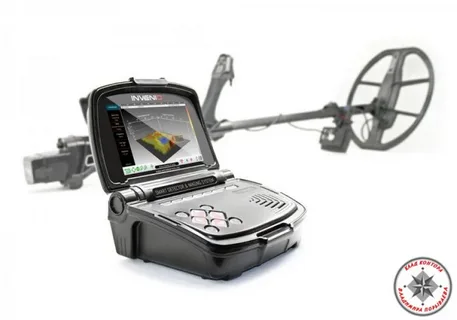
Some common techniques to evade metal detectors include:
1. Concealing metal objects on the body, such as inside clothing or in body cavities.
2. Using non-metallic materials or fabric to shield metal objects from detection.
3. Exploiting blind spots or gaps in the metal detector’s coverage to sneak metal objects through.
To prevent these evasion techniques, methods include:
1. Implementing random and thorough manual searches in addition to metal detector screenings.
2. Using advanced imaging technology to detect metal objects that may be concealed on the body.
3. Training security personnel to recognize suspicious behavior and physical indicators of concealed metal objects.
The Evolution of Metal Detector Technology in Law Enforcement
The evolution of metal detector technology in law enforcement has been significant. Metal detectors have become more sophisticated over the years, with increased sensitivity and accuracy. Advancements in technology have also led to the development of handheld and portable metal detectors, making it easier for law enforcement officers to conduct searches in a variety of environments.
Additionally, modern metal detectors often feature advanced software and algorithms that can differentiate between various types of metals, reducing false alarms and increasing efficiency. Some metal detectors are also equipped with wireless connectivity and data logging capabilities, allowing law enforcement agencies to monitor and analyze detection data in real-time.
Overall, the evolution of metal detector technology has greatly enhanced the capabilities of law enforcement officers in detecting concealed weapons and contraband, ultimately contributing to improved public safety.
Understanding the Different Types of Metal Detectors Available
There are various types of metal detectors available on the market, each with its own unique features and benefits. Some of the common types include beat frequency oscillation (BFO) detectors, very low frequency (VLF) detectors, pulse induction (PI) detectors, and multi-frequency detectors.
BFO detectors are the simplest and most affordable type, making them suitable for beginners. They work by using two coils to generate a frequency that can detect metal objects.
VLF detectors are more advanced and versatile, offering better discrimination between different types of metals. They operate by transmitting and receiving electromagnetic fields to detect metals and minerals in the ground.
PI detectors are known for their ability to detect objects at greater depths, making them ideal for use in challenging ground conditions such as highly mineralized soil or saltwater beaches.
Multi-frequency detectors are the most advanced type, offering the ability to operate at different frequencies simultaneously. This allows them to provide better depth and target identification capabilities.
When choosing a metal detector, it’s important to consider factors such as the intended use (e.g., coin shooting, relic hunting, gold prospecting), the level of experience, and the specific ground conditions in which it will be used. Understanding the different types of detectors available can help users make an informed decision based on their individual needs and preferences.
The Impact of Metal Detectors on Public Safety and Security
Metal detectors play a crucial role in maintaining public safety and security by detecting and preventing the entry of weapons, explosives, and other dangerous items into public spaces, such as airports, schools, government buildings, and event venues. The use of metal detectors has become a standard security measure in many locations to deter potential threats and minimize the risk of violent incidents. Additionally, metal detectors can provide a sense of security and reassurance to the public, as they demonstrate a commitment to maintaining a safe environment. Overall, the impact of metal detectors on public safety and security is significant, as they serve as a crucial line of defense against potential threats and contribute to overall peace of mind for individuals in public spaces.
The Effectiveness of Metal Detectors in Preventing Weapons Smuggling
Metal detectors have proven to be effective in preventing weapons smuggling in various settings, including airports, prisons, and public events. These devices are sensitive enough to detect even small metal items, making it difficult for individuals to conceal weapons or other prohibited items.
In addition to detecting metallic objects, some metal detectors are equipped with advanced technology such as X-ray imaging and artificial intelligence, which further enhances their effectiveness in identifying weapons. These features allow security personnel to identify concealed weapons more accurately and quickly, thereby preventing potential threats.
Furthermore, the presence of metal detectors serves as a deterrent to individuals attempting to smuggle weapons, as they are aware that the risk of being detected is high. This can significantly reduce the likelihood of weapons being brought into secure environments.
Overall, the use of metal detectors has proven to be a valuable tool in preventing weapons smuggling and enhancing security in various public and high-risk settings.
The Benefits of Using Metal Detectors in Construction and Demolition Sites
Metal detectors have become an essential tool in construction and demolition sites due to their ability to locate buried metal objects and wiring. These devices help prevent accidents and injuries by identifying potential hazards before they become a problem. Additionally, using metal detectors can speed up the construction and demolition process by quickly identifying buried utilities, reducing the risk of damage to underground infrastructure and saving time and money. Moreover, metal detectors also contribute to environmental protection by minimizing the disturbance to existing underground structures and preventing unnecessary soil excavation. Overall, the use of metal detectors in construction and demolition sites improves safety, efficiency, and cost-effectiveness.
How Metal Detectors Are Used in Archaeological Excavations
Metal detectors are commonly used in archaeological excavations to locate metal objects buried beneath the soil. Archaeologists use metal detectors to search for coins, tools, weapons, and other artifacts that may provide valuable insights into the history and culture of a particular site.
When conducting an excavation, archaeologists will often use metal detectors to survey the area before digging. This can help them to identify potential areas of interest and prioritize their excavation efforts. Metal detectors can also be used during the excavation process to locate buried metal objects that may not be visible to the naked eye.
In addition to being used in traditional excavation methods, metal detectors are also employed in more non-invasive archaeological techniques, such as surface surveys and metal detection surveys. In surface surveys, archaeologists use metal detectors to scan the ground for metal artifacts without actually digging into the soil. This can be especially useful for identifying potential areas for further investigation.
Overall, metal detectors are a valuable tool in archaeological excavations, helping archaeologists to uncover and preserve important historical artifacts.


